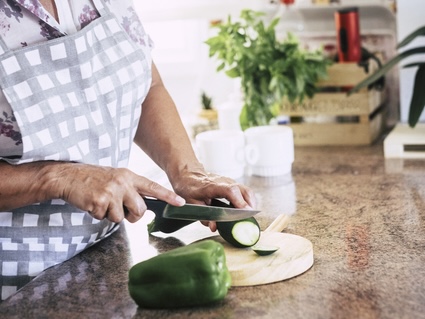Small changes in ingredients and methods mean healthier cooking and healthier eating, without sacrificing flavor or enjoyment.
You don’t have to abandon all your favorite recipes or foods to eat healthier. Small changes to ingredients or cooking methods in your recipes can lower the intake of saturated fats, carbohydrates, salt, and sugar in your diet.
These minor modifications can make a significant difference in the amount of calories you consume. Better yet, they will not make much difference in how your meals taste or how much you enjoy them.
Healthier cooking with better carbs
Carbohydrates are essential, providing energy and nutrients, but not all carbs offer the same health benefits. Picking better carbohydrates can help you control your blood sugar and weight. They may also help prevent a host of chronic conditions, lower heart disease and stroke risk, and protect against type 2 diabetes, obesity, and colon and rectal cancers..
Choose nutrient-dense carbs that are “high in fiber, vitamins, and minerals, and low in added sugars, sodium, and unhealthy fats,” counsels the American Diabetes Association.
If you have diabetes, simple carbohydrates – like table sugar and fruit juice – increase blood sugar and make it harder to manage your condition. Not only does the total amount of carbs that you consume impact your blood sugar, but the choice of food also plays a role. For example, a serving of white rice has about the same effect as eating pure table sugar, resulting in a quick, high spike in blood sugar. A serving of lentils has a slower, smaller effect.
 You can use the glycemic index (GI) to choose better foods. This system ranks foods based on how much they raise blood sugar compared to pure glucose (the baseline of 100). A food with a GI of 28 raises blood sugar 28% as much as glucose, while one with a GI of 95 has almost the same effect as glucose. Using the glycemic index is easy: choose foods in the low GI category instead of those in the high GI category and go easy on those in between.
You can use the glycemic index (GI) to choose better foods. This system ranks foods based on how much they raise blood sugar compared to pure glucose (the baseline of 100). A food with a GI of 28 raises blood sugar 28% as much as glucose, while one with a GI of 95 has almost the same effect as glucose. Using the glycemic index is easy: choose foods in the low GI category instead of those in the high GI category and go easy on those in between.
- Low glycemic index (GI of 55 or less): Most fruits and vegetables, beans, minimally processed grains, pasta, low-fat dairy foods, and nuts.
- Moderate glycemic index (GI 56 to 69): White potatoes, baked sweet potatoes, corn, white rice, couscous, breakfast cereals such as Cream of Wheat.
- High glycemic index (GI of 70 or higher): White bread, rice cakes, most crackers, bagels, cakes, doughnuts, croissants, most packaged breakfast cereals.
Food swaps for lowering glycemic index:
| Instead of this high-glycemic index food | Eat this lower-glycemic index food |
| White rice | Brown rice or converted rice |
| Instant oatmeal | Steel-cut oats |
| Cornflakes | Bran flakes |
| Baked potato | Pasta, bulgur |
| White bread | Whole grain bread |
| Corn | Peas or leafy greens |
Ingredient modifications in recipes
Try the following substitutions to focus on lowering fats, calories, and cholesterol while retaining the flavor and texture of your favorite foods.
| Instead of this ingredient | Choose this ingredient |
| 1 cup shortening or lard | ¾ cup canola or olive oil |
| 1 cup whole milk | 1 cup fat-free milk |
| 1 cup heavy cream | 1 cup evaporated skim milk |
| 1 cup sour cream | 1 cup low-fat or fat-free yogurt or sour cream |
| 1 cup cheddar cheese | 1 cup low-fat cheddar cheese |
| 8 oz. cream cheese | 8 oz. light cream cheese or 4 oz. skim ricotta and 4 oz. tofu blend |
| 1 can cream of chicken soup | 1 can low-fat cream soup |
| 1 lb. ground beef | 1 lb. ground turkey or 1 lb. extra-lean ground beef (97% lean) |
| 6 oz. tuna in oil | 6 oz. tuna in water |
| 1 cup chocolate chips | ½ cup chocolate chips |
Healthier cooking methods
When you’re in the kitchen, choose fresh, low-fat, and low-sodium options and healthier cooking methods. To eat less fat and salt for heart healthy cooking, try the following tips while you cook or choose what to buy and try. Some foods, such as sweet potatoes, can have a higher or lower glycemic index value depending upon how they are prepared.
| Instead of this method or food | Try this method or food |
| Frying foods | Baking, broiling, steaming, poaching, or grilling foods |
| Eating convenience foods (canned soups, TV dinners, frozen pizza) | Eating fresh fish, meats, fruits, and vegetables. Or look for low-salt convenience foods. Then make a balanced meal by adding a fruit, a vegetable, and low-fat or fat-free milk |
| Using butter or other fats high in saturated fat | Using products low in saturated fat. Try olive oil, vegetable oil, canola oil, or low-sodium chicken broth |
| Using salt, soy sauce, or barbecue sauce | Using herbs, spices, or lemon |
| Eating all of the meat product | Eating a 2 oz. to 3 oz. serving of meat (about the size of a deck of cards). Trim fat from meat and remove skin from chicken |
